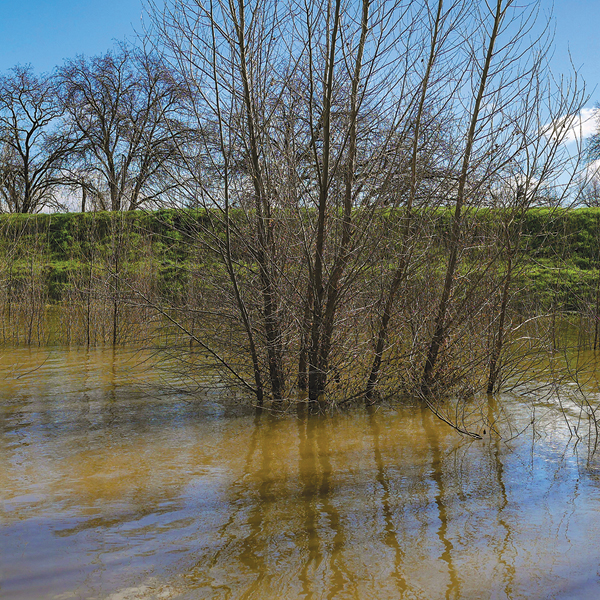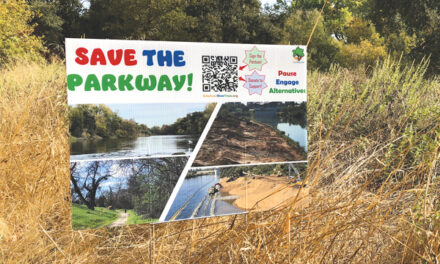Essential Work
Levee improvements are a must, not an option
By Rich Desmond
December 2024
Over the past two years, I’ve talked to many residents about flood-control improvements taking place along the American River. The overwhelming sentiment has been one of appreciation for the federal funds and resources flowing into our region to bolster public safety. However, some residents argue that the work may not be entirely necessary. I disagree.
As a resident, a member of the County Board of Supervisors and member of the Sacramento Area Flood Control Agency, I consistently support flood-control projects that are essential for our community.
While we enjoyed a recent period without a significant storm event along the American River, the threat of flooding is always present. A catastrophic event can strike at any moment, putting our homes and lives at risk. We shouldn’t gamble that it won’t happen.

History shows how vulnerable we are. In 1986, our flood-control system faced a severe test and nearly resulted in widespread levee failures. We were fortunate, but our neighbors to the north weren’t so lucky. They endured devastating floods. Every year, floods in other locations remind us that nature is unforgiving.
It’s crucial that our levee standards reflect the seriousness of this risk. Much of our infrastructure dates back over 75 years and doesn’t meet modern engineering standards. Lessons learned from the 1986 floods prompted a thorough review by federal, state and local officials. The findings highlighted essential improvements needed to safeguard the half-million residents living behind American River levees.
Recognizing this ongoing threat, Congress committed more than $1 billion to enhance our flood-control system. These funds are strategically invested in key areas, including the Folsom Dam and Sacramento Weir and Bypass, as well as addressing critical-erosion issues along the river.
To capitalize on enhancements at Folsom Dam, our downstream levee system must be equipped to manage flood releases of the magnitude experienced in 1986—and even greater. We must trust the expertise of scientists and experts who employ risk modeling, hydrology, hydraulics, and soil-composition studies and analyses to determine the actions needed to protect our lives and homes.
We cannot rest on the 200-year minimum level of protection, which merely serves as a benchmark achievement and not a final level of assurance.
Yes, flood-control improvements will have an impact on vegetation, trees and shrubs, and will temporarily disrupt access to areas of the parkway while erosion work is performed. However, it’s essential to remember that these projects come with comprehensive mitigation strategies.
I’m committed to ensuring our flood-protection work minimizes disruptions to the natural environment. Replanting and enhancing vegetation along the river after this work will restore and even improve the natural habitat over time. Just as we have seen in other areas where erosion-control measures occurred decades ago, the environment will rejuvenate, and we will emerge far safer while ensuring we have more resilient and effective flood protection.
Investing in flood control along the American River is not just a matter of infrastructure—it’s a matter of life and safety for our community. The improvements being constructed by the U.S. Army Corps of Engineers, state authorities and Sacramento Area Flood Control Agency will help safeguard our future against threats of flooding. The safety of our homes, families and community depends on it.
Rich Desmond represents District 3 on the Sacramento County Board of Supervisors. He can be reached at richdesmond@saccounty.gov or (916) 874-5471.
















